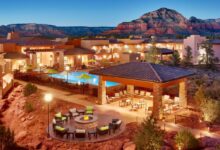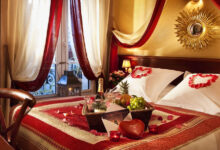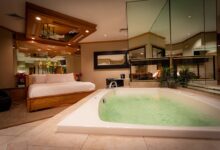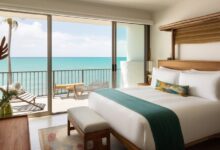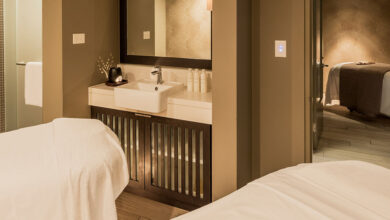Best Botswana Safari Lodges for Wildlife Viewing
Best safari lodges in Botswana offering wildlife viewing opportunities sets the stage for an unforgettable adventure. Botswana, renowned for its breathtaking landscapes and abundant wildlife, offers a plethora of luxurious safari lodges perfectly positioned to witness nature’s grandeur. From the Okavango Delta’s tranquil waterways teeming with hippos and birds to the vast plains of the Chobe National Park, home to massive elephant herds, each location provides a unique wildlife viewing experience.
This guide explores the best lodges, highlighting their amenities, sustainability efforts, and the incredible wildlife encounters they offer, helping you plan your dream safari.
Top Botswana Safari Lodge Locations
Botswana offers unparalleled wildlife viewing opportunities, and choosing the right location significantly impacts your safari experience. The country’s diverse landscapes, from the Okavango Delta’s waterways to the vast expanse of the Kalahari Desert, support a remarkable array of flora and fauna. Selecting a lodge in a prime location maximizes your chances of witnessing incredible wildlife encounters.
Prime Safari Lodge Locations in Botswana
Five locations stand out for their exceptional wildlife viewing potential: the Okavango Delta, Chobe National Park, Moremi Game Reserve, Central Kalahari Game Reserve, and Nxai Pan National Park. Each offers a unique ecological setting and distinct wildlife viewing experiences.
Comparison of Botswana Safari Lodge Locations
The following table compares these five locations based on accessibility, proximity to major wildlife populations, and typical wildlife sightings. Accessibility considers factors such as ease of reaching the lodge and internal lodge transport. Proximity to wildlife populations refers to the density and diversity of animals in the surrounding area. Typical wildlife sightings reflect the animals most commonly observed in each location.
| Location | Accessibility | Proximity to Wildlife | Typical Wildlife Sightings |
|---|---|---|---|
| Okavango Delta | Generally good; often requires a light aircraft transfer. | High; abundant wildlife concentrated along waterways. | Elephants, hippos, crocodiles, various bird species, lions, leopards. |
| Chobe National Park | Good; road access available, but some lodges require boat transfers. | Very high; renowned for its large elephant herds. | Elephants, buffalo, lions, leopards, wild dogs, various bird species. |
| Moremi Game Reserve | Moderate; requires a 4×4 vehicle and potentially a light aircraft transfer. | High; diverse ecosystem with varied wildlife populations. | Lions, leopards, cheetahs, wild dogs, elephants, hippos, various bird species. |
| Central Kalahari Game Reserve | Challenging; requires a 4×4 vehicle and often involves long drives. | Moderate; wildlife is more dispersed across the vast landscape. | Lions, cheetahs, brown hyenas, meerkats, various antelope species, birds of prey. |
| Nxai Pan National Park | Good; road access is generally good, especially during the wet season. | High during the wet season; large concentrations of wildlife around the pan. | Large herds of zebras, wildebeest, elephants, lions, various bird species. |
Advantages and Disadvantages of Each Location for Wildlife Viewing
Each location offers unique advantages and disadvantages depending on the type of wildlife viewing experience sought.The Okavango Delta, for instance, excels in birdwatching due to its extensive waterways and diverse aquatic habitats. However, big game sightings might require more effort compared to Chobe. Chobe, with its massive elephant herds concentrated along the Chobe River, is ideal for large mammal viewing, particularly elephants and buffalo, but birdlife may be less diverse than in the Delta.
Moremi Game Reserve provides a balanced experience, offering a high chance of seeing both big game and a variety of bird species. The Central Kalahari, characterized by its vast open spaces, is better suited for those interested in observing animals adapted to arid environments, like cheetahs and brown hyenas. Nxai Pan offers exceptional wildlife viewing during the wet season when large herds congregate around the pan.
However, during the dry season, wildlife becomes more dispersed.
Lodge Amenities and Services
Botswana’s top safari lodges go above and beyond to provide guests with unparalleled luxury and exceptional service, all while maintaining a strong commitment to sustainable tourism practices. This section delves into the specific amenities and services offered by three exemplary lodges, highlighting their unique features and eco-conscious efforts.
Luxury Amenities and Eco-Conscious Practices at Three Top Lodges, Best safari lodges in Botswana offering wildlife viewing opportunities
Three lodges consistently ranking among the best in Botswana are Belmond Eagle Island Lodge, and &Beyond Sandibe Okavango Safari Lodge, and Chisa Island Lodge. Each offers a distinct blend of luxury and environmental responsibility. Belmond Eagle Island Lodge, situated on a private island in the Okavango Delta, boasts lavish suites with private plunge pools overlooking the waterways, emphasizing natural materials and minimalist design to minimize environmental impact.
Their commitment to sustainability includes solar power usage, water conservation initiatives, and responsible waste management. &Beyond Sandibe Okavango Safari Lodge features spacious, elegantly appointed villas with private decks and plunge pools, prioritizing local materials and sustainable building practices. Their dedication to conservation is evident in their participation in community development programs and their active role in wildlife protection efforts.
Chisa Island Lodge, also located in the Okavango Delta, offers luxurious tented suites designed to blend seamlessly with the surrounding environment. They utilize eco-friendly cleaning products and participate in local conservation projects.
Comparison of Lodge Offerings
The following table compares key aspects of these three lodges, showcasing their unique offerings and catering to different preferences.
| Feature | Belmond Eagle Island Lodge | &Beyond Sandibe Okavango Safari Lodge | Chisa Island Lodge |
|---|---|---|---|
| Accommodation Type | Luxury Suites with private plunge pools | Spacious Villas with private decks and plunge pools | Luxurious Tented Suites |
| Dining Options | Fine dining with locally sourced ingredients | Gourmet dining experiences with bush breakfasts and dinners | Delicious meals featuring fresh, local produce |
| Activities | Mokoro rides, guided nature walks, game drives | Game drives, walking safaris, boat safaris, bird watching | Game drives, fishing, nature walks, cultural visits |
Unique Guest Experiences
Each lodge offers unique experiences designed to create lasting memories. Belmond Eagle Island Lodge provides exclusive access to the Okavango Delta’s pristine waterways, allowing guests to witness wildlife from a unique perspective during mokoro rides (traditional dugout canoes). &Beyond Sandibe Okavango Safari Lodge offers specialized photographic safaris, guided by expert photographers, enhancing the wildlife viewing experience for photography enthusiasts.
Chisa Island Lodge provides opportunities for cultural immersion through interactions with local communities, offering guests a deeper understanding of the region’s rich heritage.
Wildlife Viewing Opportunities
Botswana boasts some of the most incredible wildlife viewing opportunities on the planet. Its diverse landscapes, from the Okavango Delta’s lush waterways to the vast expanse of the Kalahari Desert, support an astonishing array of animals. Understanding the seasonal changes and animal behaviors is key to maximizing your safari experience.
The success of wildlife viewing is heavily influenced by the time of year you visit, as animal movements and breeding cycles dictate where and when certain species are most easily observed. For example, the great wildebeest migration in the Okavango Delta dramatically alters the landscape and predator-prey dynamics, offering unique viewing opportunities during specific months. Understanding these seasonal shifts is crucial for planning a truly rewarding safari.
Wildlife Species and Habitats
Botswana’s diverse ecosystems support a wide range of wildlife. The Okavango Delta, a unique inland river delta, is teeming with aquatic life, including hippos, crocodiles, and various bird species. The Chobe National Park, known for its large elephant herds, also boasts lions, leopards, cheetahs, and wild dogs. The Central Kalahari Game Reserve, a vast arid landscape, is home to desert-adapted animals such as meerkats, bat-eared foxes, and brown hyenas.
Botswana’s safari lodges offer incredible wildlife viewing, from majestic elephants to elusive leopards. For a different kind of adventure, consider exploring South America; you might check out the amazing Best eco-friendly hotels in Bolivia with stunning natural surroundings , which offer a unique perspective on nature. Then, return to the thrill of a Botswana safari, immersing yourself in the raw beauty of the African bush.
Each location offers unique opportunities to observe animals in their natural habitats, exhibiting distinct behaviors adapted to their environment. For instance, elephants in Chobe are known for their impressive river crossings, while lions in the Okavango Delta are often seen hunting along the waterways.
Seasonal Wildlife Viewing
The best time to view specific animals often coincides with their breeding seasons or migratory patterns. These patterns can vary slightly year to year due to rainfall and other environmental factors, but general guidelines exist.
For example, the best time to see large herds of wildebeest in the Okavango Delta is during the wet season (November to April), as they follow the floodplains. Conversely, the dry season (May to October) offers excellent viewing opportunities for predators as animals congregate around dwindling water sources. In Chobe National Park, the dry season is generally best for viewing large elephant herds, as they concentrate near the Chobe River for water.
The Central Kalahari Game Reserve offers good viewing year-round, though the dry season provides better visibility across the vast landscape.
Botswana’s safari lodges offer incredible wildlife viewing, from elephants bathing in the Okavango Delta to lions prowling the savanna. For a completely different kind of breathtaking view, consider a luxurious stay in New York City; check out Luxury hotels in New York City with breathtaking views of Central Park for stunning cityscapes. Then, return to the wild and experience the unparalleled beauty of Botswana’s natural wonders.
Wildlife Sightings Probability
The probability of encountering specific animals varies greatly depending on location and season. This table provides a general guideline, but remember that wildlife sightings are never guaranteed.
| Location | Season | Elephants | Lions |
|---|---|---|---|
| Okavango Delta | Wet (Nov-Apr) | High | Medium |
| Okavango Delta | Dry (May-Oct) | Medium | High |
| Chobe National Park | Wet (Nov-Apr) | High | Medium |
| Chobe National Park | Dry (May-Oct) | Very High | High |
| Central Kalahari | Wet (Nov-Apr) | Low | Low |
| Central Kalahari | Dry (May-Oct) | Low | Low |
Safari Lodge Sustainability and Conservation Efforts
Botswana’s commitment to sustainable tourism is evident in the practices of many of its leading safari lodges. These lodges aren’t just offering incredible wildlife viewing experiences; they’re actively contributing to the long-term health of the environment and the well-being of local communities. Their initiatives demonstrate a proactive approach to responsible tourism, balancing economic benefits with environmental protection and social equity.Many lodges actively integrate sustainability into their core operations, going beyond simple compliance with regulations.
This commitment manifests in various ways, from employing local staff and sourcing supplies locally to implementing innovative conservation programs and minimizing their environmental footprint. The benefits extend to both the environment and the guests, enhancing the overall safari experience by providing a deeper connection to the land and its people.
Examples of Lodge Sustainability Initiatives
Several Botswana safari lodges showcase exemplary sustainable practices. For instance, some lodges invest heavily in renewable energy sources, such as solar power, to reduce their reliance on fossil fuels and minimize their carbon emissions. Others implement rigorous waste management systems, including composting and recycling programs, to reduce landfill waste. Furthermore, many lodges actively participate in wildlife monitoring and anti-poaching initiatives, contributing to the long-term preservation of Botswana’s rich biodiversity.
Botswana’s safari lodges offer incredible wildlife viewing, from the Okavango Delta’s elephants to the Chobe National Park’s lions. If you need a budget-friendly break after your adventure, check out some Cheap hotels in Batam ideal for a short weekend getaway before returning to plan your next safari. These luxurious Botswana lodges provide truly unforgettable experiences, making them a worthwhile splurge for wildlife enthusiasts.
Community Development and Wildlife Conservation Contributions
Beyond environmental initiatives, many lodges prioritize community development. They often partner with local communities, providing employment opportunities, supporting educational programs, and investing in local infrastructure. This approach ensures that the benefits of tourism are shared equitably, contributing to the economic empowerment and social well-being of surrounding communities. For example, some lodges might fund scholarships for local students or support community healthcare initiatives.
Their contributions to wildlife conservation frequently involve collaborations with government agencies and conservation organizations to monitor wildlife populations, combat poaching, and protect critical habitats. This might involve sponsoring research projects, providing logistical support for anti-poaching patrols, or contributing to habitat restoration efforts.
Enhanced Safari Experience Through Sustainability
The commitment to sustainability enhances the overall safari experience for guests in several ways. For example, witnessing a lodge’s commitment to renewable energy or learning about their community development projects adds a deeper layer of meaning and appreciation to the safari. Guests often feel a stronger connection to the environment and the local culture, enriching their travel experience.
Furthermore, the knowledge that their safari contributes positively to conservation efforts can enhance their sense of purpose and fulfillment. Knowing that their tourism dollars are supporting local communities and protecting wildlife creates a more meaningful and responsible travel experience. This heightened sense of purpose and engagement significantly improves guest satisfaction and contributes to a more authentic and memorable safari.
Budgeting and Planning a Botswana Safari
Planning a Botswana safari can feel overwhelming, but with careful budgeting and planning, you can create an unforgettable experience. This section Artikels various budget options and provides a step-by-step guide to help you navigate the process, ensuring a memorable and responsible trip.
Budgeting for a Botswana Safari
The cost of a Botswana safari varies dramatically depending on your preferences for accommodation, activities, and the time of year you travel. Peak season (June to October) is significantly more expensive than the green season (November to May). Expect to pay a premium for luxury lodges and private guided safaris.
Here’s a general breakdown of potential budget ranges:
- Budget Safari (under $3000 per person for a 5-day trip): This typically involves camping safaris or staying in basic lodges outside of prime game viewing areas. Activities might be limited to game drives in open vehicles. Transportation would likely be self-drive or shared transfers. This budget is difficult to achieve for a comfortable experience in the most popular areas.
- Mid-Range Safari ($5000 – $10,000 per person for a 5-day trip): This offers a balance between comfort and affordability. Expect comfortable lodges or guesthouses, a mix of game drives and potentially other activities like walking safaris or boat safaris. Transportation might include a combination of self-drive and pre-arranged transfers.
- Luxury Safari (over $10,000 per person for a 5-day trip): This category includes stays in exclusive, high-end lodges with personalized service and luxurious amenities. Activities are typically comprehensive, including private game drives, guided walks, and perhaps even hot air balloon rides. Private transportation is standard.
These are rough estimates, and the final cost will depend on factors such as the length of your trip, specific activities chosen, and the level of luxury you desire.
Planning Your Botswana Safari: A Step-by-Step Guide
Planning a safari requires careful consideration and advance booking, especially during peak season. Here’s a suggested approach:
- Determine your travel dates and budget: Peak season offers the best wildlife viewing but comes at a higher price. The green season offers lower prices and lush landscapes, but wildlife sightings might be less frequent.
- Choose your preferred safari style: Decide if you want a camping safari, a lodge safari, or a combination. Consider your comfort level and budget.
- Select your safari lodge or camp: Research and choose a lodge that aligns with your budget and preferences. Read reviews and compare options.
- Book your flights and transfers: International flights to Botswana (usually via Johannesburg) should be booked well in advance. Arrange airport transfers and internal flights within Botswana if necessary.
- Confirm your safari activities: Many lodges include game drives, but additional activities like walking safaris or boat safaris might require pre-booking.
- Arrange travel insurance: Comprehensive travel insurance is essential to cover unexpected events.
- Pack appropriately: Pack light, neutral-colored clothing, comfortable walking shoes, sunscreen, insect repellent, and a hat.
Maximizing Value and Minimizing Environmental Impact
To maximize the value of your safari while minimizing your environmental footprint, consider these tips:
Choosing a lodge committed to sustainability and conservation will significantly contribute to responsible tourism. Look for lodges with clear environmental policies and community engagement programs. Support local businesses and guides whenever possible. Respect wildlife by maintaining a safe distance and following your guide’s instructions. Reduce your waste by packing reusable water bottles and avoiding single-use plastics.
Botswana’s safari lodges provide incredible wildlife viewing, from elephant herds to elusive leopards. Planning a trip requires considering your family’s needs; if you’re thinking of a city break afterward, check out Top-rated family hotels in Tokyo with easy access to public transport for a smooth transition. Then, back to the African adventure – choosing the right lodge in Botswana is key for an unforgettable safari experience.
By being mindful of your actions, you can contribute to the long-term preservation of Botswana’s incredible natural beauty.
Visual Representations of Lodges and Wildlife: Best Safari Lodges In Botswana Offering Wildlife Viewing Opportunities
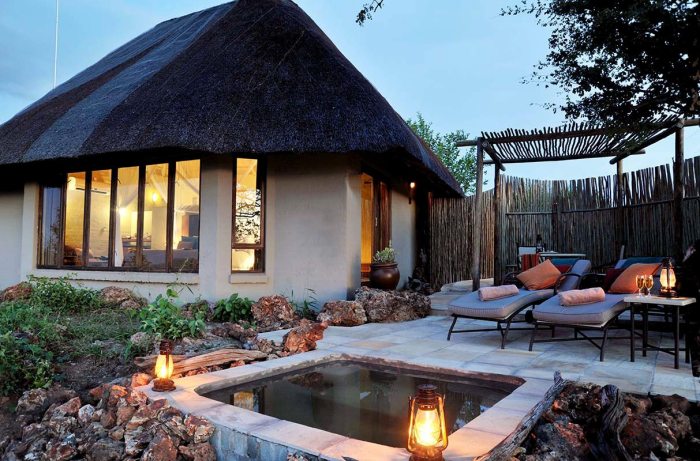
Source: artofsafari.travel
Botswana’s safari lodges and their wildlife inhabitants offer a stunning visual spectacle. The lodges themselves are often architectural masterpieces, seamlessly blending into the breathtaking landscapes, while the animals are a captivating display of nature’s artistry. This section explores the visual aspects of both, highlighting the unique characteristics of each.
Architectural Styles and Landscapes of Botswana Safari Lodges
Three distinct lodges exemplify the diverse architectural approaches to integrating luxury with the natural environment. Each lodge’s design carefully considers the surrounding landscape, maximizing views and minimizing environmental impact.
Firstly, consider a lodge nestled amongst the ancient baobab trees of the Okavango Delta. Imagine its architecture – low-slung structures built from local materials such as thatch and sustainably harvested timber. The design emphasizes natural tones and earthy textures, mimicking the colors and forms of the surrounding savanna. Large windows frame panoramic views of the delta, while open-air decks extend the living space into the wilderness.
The overall effect is one of seamless integration with the environment, creating a sense of tranquility and immersion in the natural world. The design subtly blends into the landscape, respecting the inherent beauty of the setting.
Secondly, picture a lodge perched on a cliff overlooking a vast expanse of the Chobe National Park. This lodge might boast a more contemporary architectural style, utilizing sleek lines and glass panels to maximize the stunning views. However, even here, the design incorporates sustainable practices, employing solar energy and water conservation techniques. Local stone and timber are used in construction, connecting the structure to its environment.
The use of neutral colours and textures helps to blend the lodge into the landscape, allowing the natural beauty to take centre stage.
Finally, imagine a lodge situated within the lush vegetation of the Moremi Game Reserve. Here, the architecture might be more rustic, using traditional methods and materials to create a sense of intimacy with the wilderness. Think of thatched roofs, mud walls, and open-plan layouts that encourage a close connection with the surrounding environment. The lodge’s design might incorporate elevated walkways and viewing platforms, providing unobstructed views of the wildlife while minimizing disturbance to the ecosystem.
The earthy tones and natural textures of the materials blend seamlessly with the rich greens and browns of the surrounding bush.
Visual Characteristics of Iconic Botswana Wildlife
Botswana is home to a diverse range of wildlife, each possessing unique visual characteristics. Three iconic species offer a compelling glimpse into the region’s biodiversity.
Botswana’s safari lodges offer incredible wildlife viewing, from the Okavango Delta’s waterways to the vastness of the Kalahari. Planning your trip might involve browsing images of stunning lodges, and you could even find inspiration in the charming aesthetics of a completely different style, like checking out some examples of Farmhouse exterior design for a change of pace before returning to planning your Botswana adventure.
The contrast is surprising, but both offer unique visual appeals! Ultimately, the best safari lodge depends on your preferences and budget, but the wildlife viewing is consistently amazing.
The African elephant, a majestic creature, is immediately recognizable by its immense size and imposing presence. Adults can reach heights of up to 13 feet and weigh up to 6 tons. Their thick, wrinkled grey skin is textured and deeply lined, bearing the marks of a life lived in the harsh African sun. Their large ears, shaped like the African continent, help regulate their body temperature, and their long, powerful tusks are a symbol of both strength and vulnerability.
Their slow, deliberate movements contrast with their surprising bursts of speed when alarmed.
The African lion, the king of the savanna, possesses a powerful and commanding presence. Its tawny coat is a perfect camouflage against the dry grasslands, and its muscular body is built for both stealth and strength. A mature male’s distinctive mane, a thick ruff of dark brown or black hair, is a symbol of dominance and maturity. The lion’s powerful jaws and sharp teeth are a testament to its predatory nature, while its amber eyes hold a captivating intensity.
The lion’s social behavior, living in prides, is also a visual spectacle, with the complex dynamics between individuals constantly playing out.
The cheetah, the world’s fastest land animal, is a breathtaking example of feline elegance and speed. Its slender, streamlined body is covered in a coat of pale, sandy fur, marked with distinctive black spots. These spots provide excellent camouflage in the grasslands and serve as a unique identifier for each individual. Its long, powerful legs and deep chest are perfectly adapted for high-speed running, allowing it to reach speeds of up to 75 mph in short bursts.
Its small, rounded head and piercing blue eyes complete its striking appearance. The cheetah’s hunting style, characterized by short, explosive bursts of speed, is a captivating visual display.
Botswana’s safari lodges offer incredible wildlife viewing, from the Okavango Delta’s hippos to the Chobe National Park’s elephants. Planning your trip requires attention to detail, and that extends beyond packing; you’ll want your home looking its best when you return. Check out these helpful cleaning tips for house exterior to ensure a sparkling welcome home after your amazing safari adventure in Botswana’s stunning wilderness.
These lodges really are something special!
Concluding Remarks
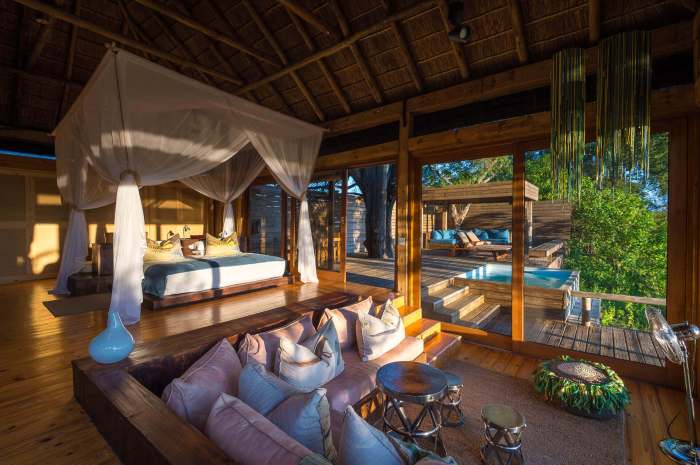
Source: africaodyssey.com
Planning a Botswana safari promises an unparalleled wildlife adventure. By carefully considering the location, lodge amenities, and time of year, you can maximize your chances of witnessing incredible wildlife spectacles. Remember to choose a lodge that aligns with your budget and values, prioritizing sustainable practices that support both the environment and local communities. The memories created during your Botswana safari, filled with breathtaking sights and unforgettable encounters, will last a lifetime.
Common Queries
What’s the best time of year to visit Botswana for a safari?
The dry season (May to October) is generally considered the best time, offering clear skies, excellent wildlife viewing due to concentrated animal populations around water sources, and easier game viewing.
How much should I budget for a Botswana safari?
Costs vary greatly depending on the lodge, length of stay, and activities. Expect to pay anywhere from a few thousand to tens of thousands of dollars per person.
What vaccinations are recommended for Botswana?
Consult your doctor for recommended vaccinations, but generally, yellow fever, typhoid, and malaria prophylaxis are often advised. Always check the latest health advisories before your trip.
Are there any age restrictions for safari activities?
Some activities, like bush walks, might have age restrictions or recommendations. Check with the lodge directly for details on age appropriateness for specific activities.
What should I pack for a Botswana safari?
Pack lightweight, neutral-colored clothing, comfortable walking shoes, a wide-brimmed hat, sunscreen, insect repellent, binoculars, and a camera with a good zoom lens.
